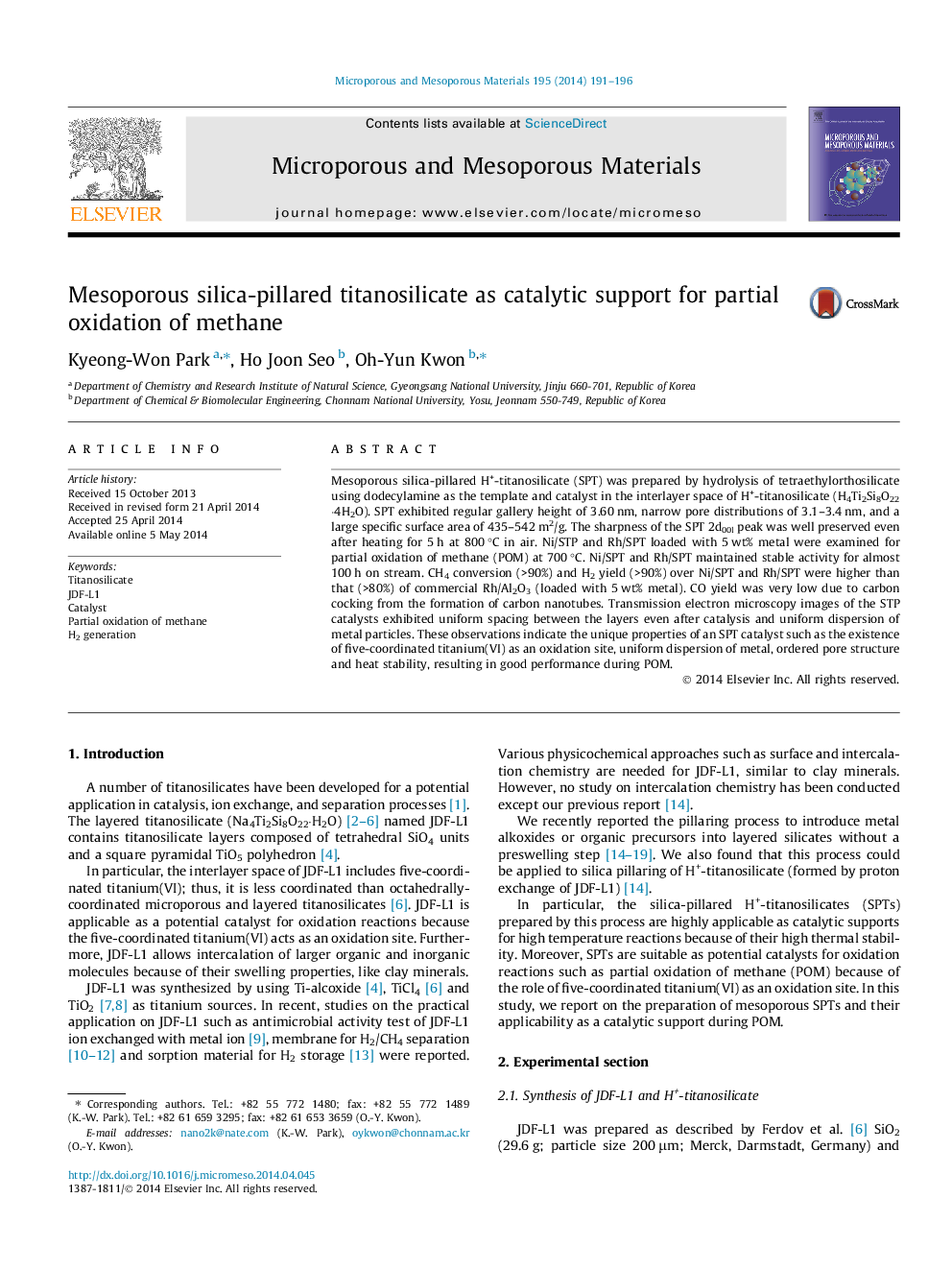| کد مقاله | کد نشریه | سال انتشار | مقاله انگلیسی | نسخه تمام متن |
|---|---|---|---|---|
| 73112 | 49044 | 2014 | 6 صفحه PDF | دانلود رایگان |
• Mesoporous-titanosilicate was prepared by hydrolysis of tetraethylorthosilicate.
• Mesoporous-titanosilicate exhibited gallery height of 3.60 nm, and specific surface area of 435–542 m2/g.
• CH4 conversion (>90%) and H2 yield (>90%) over Ni/SPT and Rh/SPT were higher than that (>80%) of commercial catalyst.
• CO yield was very low due to from the formation of carbon nanotubes.
• SPT catalyst was it an oxidation site, uniform dispersion of metal, ordered pore structure and heat stability.
Mesoporous silica-pillared H+-titanosilicate (SPT) was prepared by hydrolysis of tetraethylorthosilicate using dodecylamine as the template and catalyst in the interlayer space of H+-titanosilicate (H4Ti2Si8O22·4H2O). SPT exhibited regular gallery height of 3.60 nm, narrow pore distributions of 3.1–3.4 nm, and a large specific surface area of 435–542 m2/g. The sharpness of the SPT 2d00l peak was well preserved even after heating for 5 h at 800 °C in air. Ni/STP and Rh/SPT loaded with 5 wt% metal were examined for partial oxidation of methane (POM) at 700 °C. Ni/SPT and Rh/SPT maintained stable activity for almost 100 h on stream. CH4 conversion (>90%) and H2 yield (>90%) over Ni/SPT and Rh/SPT were higher than that (>80%) of commercial Rh/Al2O3 (loaded with 5 wt% metal). CO yield was very low due to carbon cocking from the formation of carbon nanotubes. Transmission electron microscopy images of the STP catalysts exhibited uniform spacing between the layers even after catalysis and uniform dispersion of metal particles. These observations indicate the unique properties of an SPT catalyst such as the existence of five-coordinated titanium(VI) as an oxidation site, uniform dispersion of metal, ordered pore structure and heat stability, resulting in good performance during POM.
Figure optionsDownload as PowerPoint slide
Journal: Microporous and Mesoporous Materials - Volume 195, 1 September 2014, Pages 191–196
